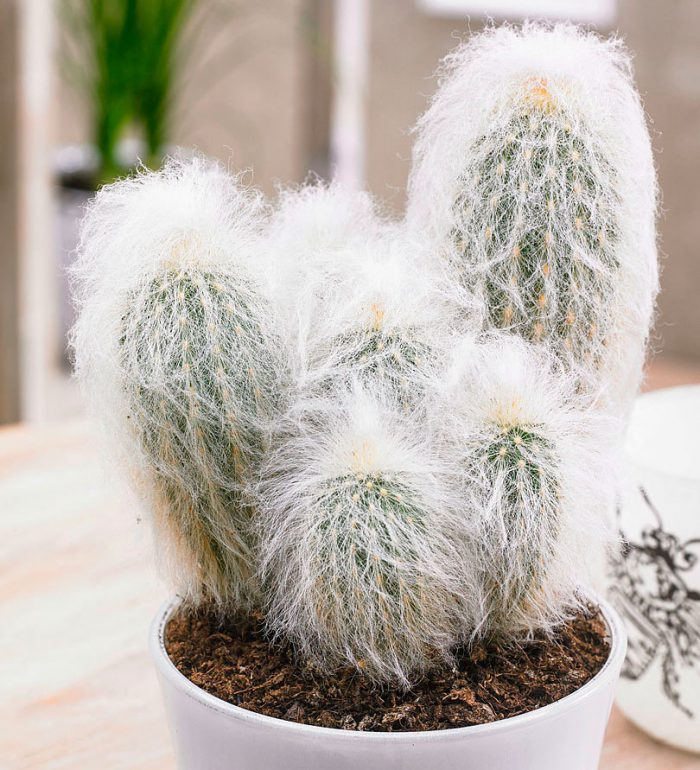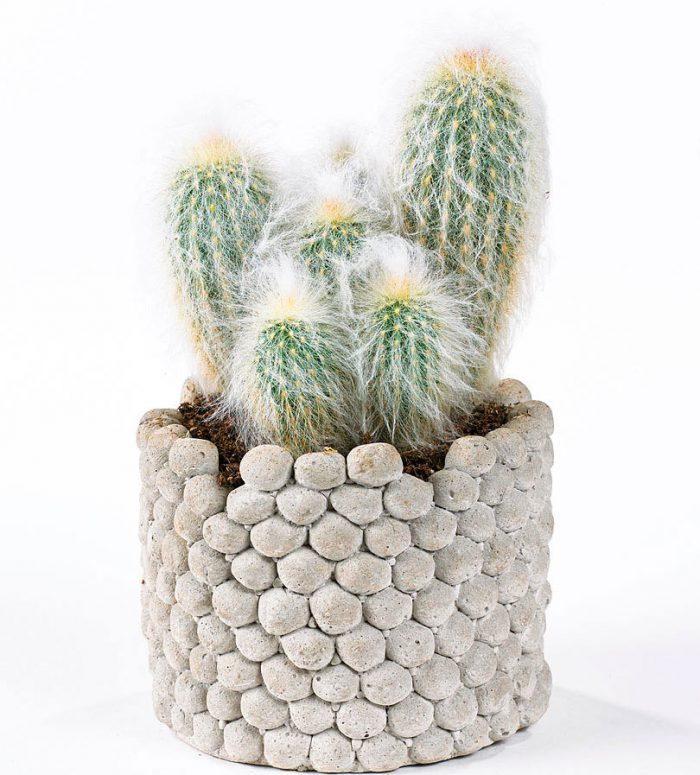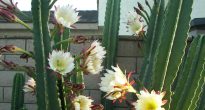Espostoa is directly related to the cactaceae family, and is considered a variety cleistocactus... This plant is columnar and has stems branching from the base. Shoots can grow up to 3 meters in height, and there are a huge number of hairs on their surface. In nature, this cactus can be found in the midlands of southern Ecuador and the northern half of Peru. Under natural conditions, Espostoa produces spectacular bell-shaped flowers that can reach 5 centimeters in diameter. Flowering is observed only in adult specimens. After flowering, oval-shaped fruits are formed, on the surface of which there is a layer of hairs and scales.
At home, most often grown espostow woolly (Espostoa Lanata). The most suitable conditions for her maintenance are in greenhouses. There the plant opens up in full glory. But it is quite possible to grow it indoors. Florists love this cactus for its unusual whitish woolly pubescence. At home, it blooms extremely rarely and can reach a height of 35 to 70 centimeters. Home espostoa has a columnar, strong and rather thick stem, painted in a greenish-gray color, on the surface of which there is a dense covering, consisting of sharp spines and hairs.
Content
Espoo home care
Illumination
Loves light. The plant needs bright lighting both in summer and especially in winter.
Temperature regime
In spring and summer, it is recommended to keep the cactus at moderate temperatures. With the onset of the cold season, it must be rearranged to a fairly cool place (from 15 to 18 degrees). You should know that Espostoa feels quite comfortable at temperatures not lower than 8 degrees.
How to water
During active growth, water the plant very carefully, while watering should be rather scarce. Do not forget that this cactus comes out of dormancy for a very long time (throughout spring and early summer). In the autumn-winter period, you only need to water the cactus with a small amount of water occasionally.
Humidity
Does not need additional moisture from the sprayer. On hot summer days, frequent ventilation is recommended.
Transplant features
While the cacti are young, they should be transplanted once a year. For transplantation, you should choose a container in size slightly larger than the previous one. A suitable dredge should have good water and air permeability and deep drainage.To prepare the mixture, it is necessary to combine sod land, leaf humus, as well as brick and marble chips, taken in a ratio of 2: 1: 2.
Reproduction methods
In the spring and summer, it can be propagated by cuttings. Cuttings must be dried for several days before planting in peat soil. You can grow cacti from seeds if the room temperature is 17 to 25 degrees.
Sowing seeds can be carried out in the spring-summer period in a dry mixture, consisting of leafy soil and coarse sand. The container is covered with glass and put away in a well-lit place. When the seedlings appear, the glass will need to be removed.
In the event that some of the seeds germinated a little earlier than the rest, they will need to be transplanted into another pot. At the same time, the transplanted seedlings should not be disturbed until they are completely rooted. Then the seedlings are planted in small pots.
Possible difficulties
- There is rot at the bottom of the stem (near the surface of the substrate) - due to overflow. It is necessary to revise the watering regime.
- Lime deposits appear on the hairs - due to plant moisture from the sprayer.












